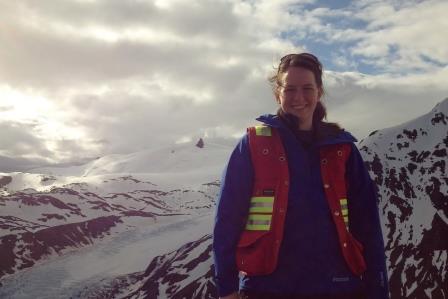Biography:
Michelle is currently a Ph.D. student at Oregon State University, working under the supervision of Prof. John Dilles. Michelle completed a B.Sc. (Honours) at McGill University in 2007, and received a M.Sc. degree in volcanology from the University of British Columbia in 2012. Her experience in the mineral exploration industry spans a range of different commodities and deposits located in Canada and Australia, including porphyry copper, iron ore, kimberlite, and mesothermal gold projects.
During the last decade, Michelle has supervised the collection of large lithogeochemical and hyperspectral imaging data sets, led relogging campaigns, and built 3-D lithological and geochemical models. Her principal research interests include magmatic-hydrothermal ore deposits, refractory mineral geochemistry, geochronology, and the application of field portable devices to mineral exploration.
Project: Geology and Geochemistry of the Kerr-Sulphurets-Mitchell Porphyry Cu-Au District, British Columbia
The Kerr-Sulphurets-Mitchell (KSM) porphyry Cu-Au district, located in northwest British Columbia, Canada, hosts one of the world’s largest undeveloped reserves of copper and gold. The KSM district features calcalkaline intrusions associated with four distinct porphyry ore bodies: Kerr, Sulphurets, Mitchell and Iron Cap. Mineralization within each of the four porphyry centers is predominantly hypogene and associated with zones of high quartz vein density centered on Early Jurassic hypabyssal intrusions. The primary aim of this PhD project is to describe the magmatic evolution of the KSM district porphyries, by seeking to establish, for example, the exact chronology of the intrusions at each deposit.
The particularly gold-rich nature of the KSM porphyries is somewhat enigmatic, as are variations in the ratio of gold to copper within the district; we will investigate the potential causes underlying these characteristics. Significant district-scale deformation — especially prevalent in zones of strong sericite or chlorite alteration — as well as low greenschist facies metamorphism, have resulted in widespread chloritization, mica recrystallization, obstruction of primary textures due to the development of zones of strong foliation, and destruction of fluid inclusions. Due to the substantial post-mineral modification of the district, KSM exemplifies the ubiquitous value and utility of refractory primary minerals in characterizing porphyry magmatic systems. We will analyze and interpret the geochemical signatures of resistive minerals commonly found within the KSM intrusions, including zircon, apatite and titanite. Combined with whole rock geochemistry and the petrography of least-deformed specimens, these data will reveal new insights into the magmatic history of the KSM district.
